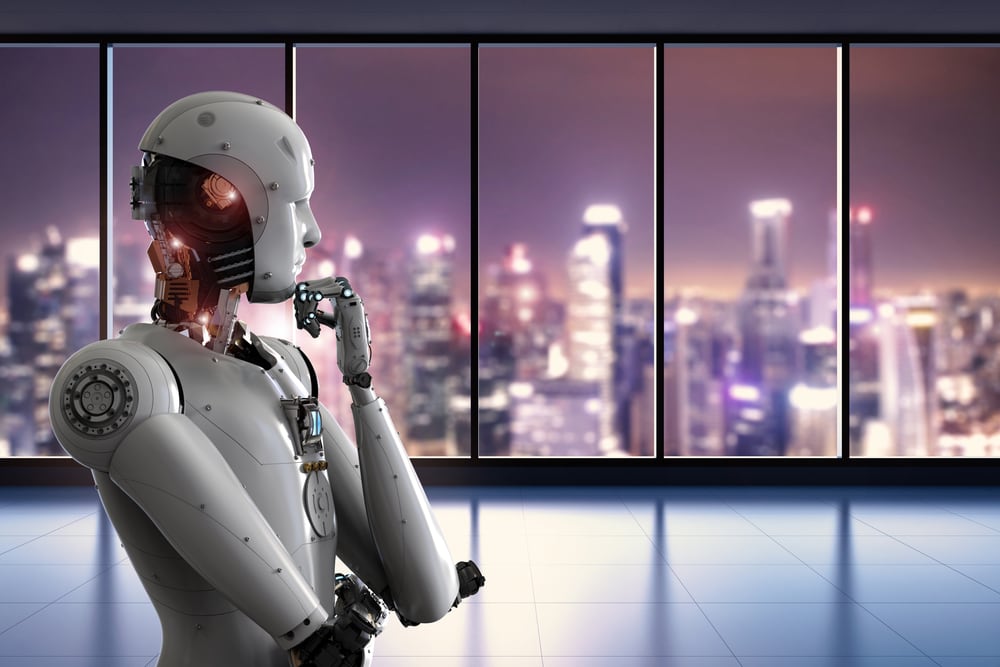Now For Something Completely Different: Elon’s Bots

Credit: Shutterstock
As you might imagine, I’m a big Elon Musk fan. This past week, he made an announcement that I have little doubt will again change society as we know it. Let’s dig in.
The Jetsons
You may be way too young to remember the Jetsons. This was a 1960s cartoon that showed a future where there were flying cars and robots. The robotic housekeeper was called “Rosie” and ever since this cartoon, for many of us, we just knew our future would be filled with flying cars and robots. Well, the flying cars never happened. However, for a while there, it looked like maybe Rosie was on the way!
Almost a Domestic Robot?
Back in the early 2000s, Honda had a robot prototype called Asimo:
The good news was that for a few years, it seemed to be making great progress. Asimo was even featured at the Disney parks. However, in the past 5 years, the momentum for this little child-sized robotic housekeeper petered out.
Boston Dynamics
While Asimo relied on simple walking technology, one of it’s downfalls was that the computer power to handle basic movements and changes to them to react to the real world couldn’t be handled in real-time easily by an onboard computer. Hence, some grad students from MIT founded a company called Boston Dynamics. The goal was to make robots that would be more animal or human-like. Meaning, we don’t think about reaching for a cup of water or stepping over an object as these are hardcoded reflexes that are unconscious and take very little brainpower. Hence their robots used simple machine learning to hard code these reflexes and to react to the environment:
The above 2008 video of Big Dog shows that when a worker shoves the robot, it automatically rights itself using those hardcoded machine learning reflexes, just like a living horse or a dog would. In fact, this video is so scarily accurate in simulating organic motion that it’s always looked to me like there were two guys in there with black leggings on!
Boston Dynamics was funded by DARPA grants until it was bought by Google in 2013. I was super excited to see that maybe Google would finally deliver on my robot housekeeper! However, Google sold the company in 2017 and now it’s owned by Hyundai. They did produce a commercial product called “SPOT” which looks like a small dog and cruises around construction sites documenting progress. In addition, their work on their humanoid robot called Atlas has continued with crazy videos being released every few months:
Seeing the progress that Atlas has made makes me think that Boston Dynamics and Hyundai may yet deliver on a real-life domestic or labor robot that we can all afford. However, realize that it’s been almost three decades of development without a product that an average Joe can buy!
Elon’s Bots
If there’s one thing you can say about Elon Musk is that not only is he an epic visionary, but he’s also a “get ‘er done” kind of guy. While his predictions are usually off, he eventually makes the impossible real. Who would have thought that he could make electric cars tangible and profitable? The same with access to space through reusable rockets that fly themselves home? Or self-driving that looks like it’s going to happen sometime soon? Or an automated underground tunnel system under our cities? So when Elon announced a robot last week, I took notice:
This project makes sense, as Tesla has experience with:
- Real world AI
- Batteries
- Actuators
So my sense is that Elon may will deliver on a real-world bot we can all buy sooner than anyone else.
What Are the Implications?
The convergence of AI (artificial narrow intelligence), sensors, and lightweight and powerful batteries will mean that a labor bot is less than 5-10 years away. If Elon has his way, we may see one on the market in the next few years. The same will happen with self-driving. These two technologies will dramatically remake the economy as we know it.
Take a labor bot that can be taught in seconds to perform any non-skilled or skilled labor position. Construction workers-gone. Factory workers-gone. Machinists-gone. Consider a true AI driving system that can get safely get from point A to B by itself. Truck drivers, UBER drivers, and Taxi drivers become obsolete.
Hence, this next decade will be interesting as these products begin to come on the market. At first, we’ll see shifts in work patterns. But by the 2030’s, expect worldwide unemployment to begin to climb. By the 2040’s it will be very noticeable and by the 2050’s, large segments of the human population will be unemployable. This will also massively impact third world countries, as all manufacturing will be local, as there is no “cheaper labor” overseas anymore. All manufacturing can be done locally for the amortized price of the bots plus the cost of electricity and maintenance.
The upshot? If you’re advising your kids or grandkids what to be when they grow up, stay away from industries that will be the first to be automated! While we may have real societal issues to be figured out, finally getting a Rosie the Robot that can clean and do all of that house maintenance for the cost of electricity might be really nice!

If you have questions or comments about this blog post, please email us at [email protected]
NOTE: This blog post provides general information to help the reader better understand regenerative medicine, musculoskeletal health, and related subjects. All content provided in this blog, website, or any linked materials, including text, graphics, images, patient profiles, outcomes, and information, are not intended and should not be considered or used as a substitute for medical advice, diagnosis, or treatment. Please always consult with a professional and certified healthcare provider to discuss if a treatment is right for you.
